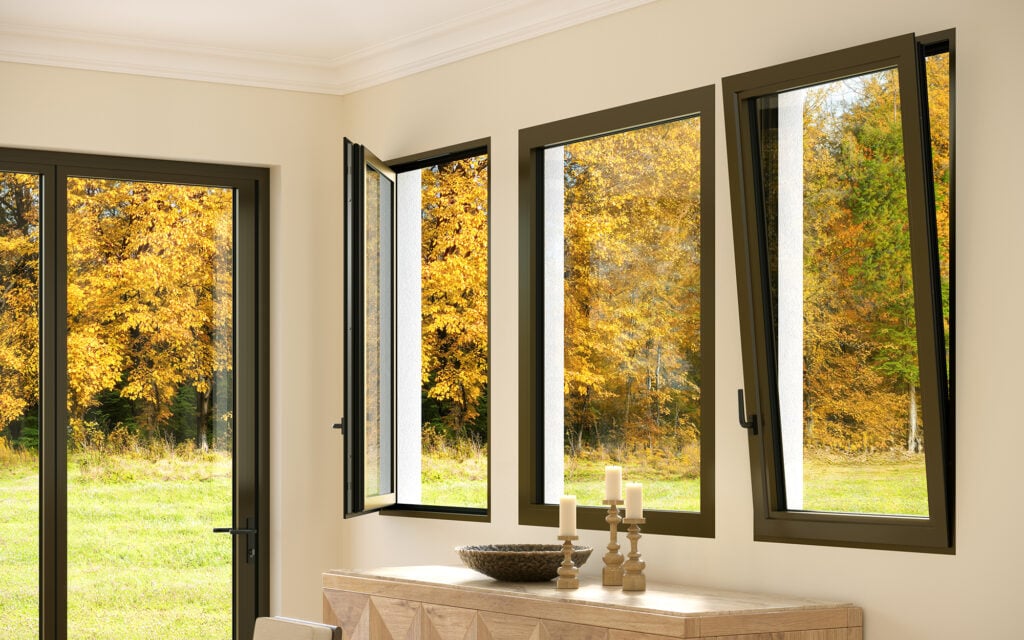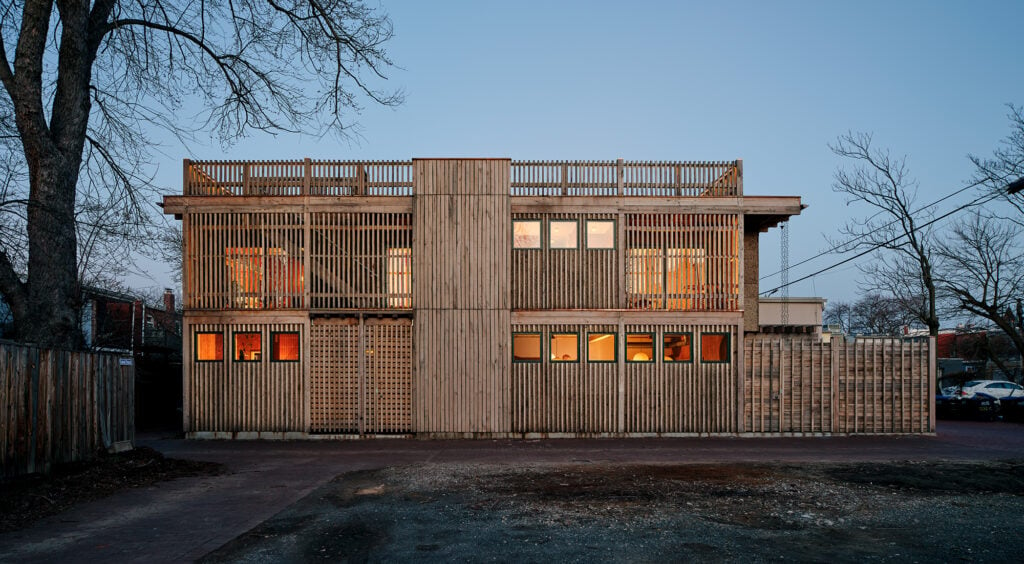
March 29, 2023
EcoLogicStudio Grows Air-Purifying Architecture with Algae
What if we could grow buildings? What if—like plants—those buildings recycled air?
That seemingly impossible idea is no longer a dream due to the work of London-based architecture and design firm ecoLogicStudio, who harnesses the beauty and intelligence of the natural world to make strides in what they describe as “biotechnology for the built environment.”

EcoLogicStudio Builds with Microscopic Organisms
Architects, authors, and educators Claudia Pasquero and Marco Poletto founded ecoLogicStudio in 2005. Inspired by Gregory Bateson’s 1972 book Steps to an Ecology of Mind, the design innovation agency studies microscopic organisms to create spaces, products, and processes that support healthier buildings and cities.
The studio’s highly specialized eight-person team works with researchers at the University College London’s Urban Morphogenesis Lab and the University of Innsbruck’s Synthetic Landscape Lab in a partnership known as PhotoSynthetica.
With installations and exhibitions spanning across Europe and Asia, the team combines the “sensibility of the designer” with the “spirit of the innovator,” creating site-specific projects that draw on iterative research.

Purifying Polluted Air with Algae
ecoLogicStudio’s most known investigation is BioBombola, a glass photobioreactor that holds living photosynthetic microalgae. The system feeds on the byproducts of pollutants in the air and produces fresh oxygen.
“This project creates an alliance with microorganisms and cell material,” says Pasquero. “What is dangerous for us is, in reality, a nutrient for them.”
The BioBombola system has been integrated in the Otrivin AirLab at London’s Building Centre. The installation demonstrates that cities could recirculate emissions with closed circular metabolisms.Not only does it purify the air and capture carbon dioxide, the project harnesses the resulting biomass for biodegradable algae-based polymers.”In this way, we have demonstrated the possibility for architecture to be grown out of the carbon and minerals that we filter from the air,” Poletto explains.

Growing Architecture to Store Carbon
An instance of “grown architecture” can be seen in the studio’s TreeOne exhibition, which was first installed in Busan, South Korea. The tree-like structure uses artificial intelligence to 3D print algae-based polymers into a form that captures and stores the same amount of carbon as a natural mature tree.
The second iteration of TreeOne—combined with an experimentation lab and an artificial intelligence application video—will open at Seoul’s Hyundai Motorstudio at the end of March.
Rather than sequestering its innovations within the research community, ecoLogicStudio shares its findings and applications across generations through open laboratories for students and play structures for young children.

An Inflatable Environment That Clears the Air
First tested in Warsaw and most recently in Cairo, AirBubble is an inflatable space that uses air, water, and living algae cultures within a thin membrane to create a microclimate that purifies the air as kids bounce—allowing leisure time to be activated as collective environmental transformation.
ecoLogicStudio’s innovations rely on collaboration with natural organisms to create symbiotic relationships between people and the planet.”These topics are no longer a matter of pure speculation,” Poletto says. “There is now a concrete case for us to implement them in scenarios where people can begin to engage with these practices on a daily basis.”

Would you like to comment on this article? Send your thoughts to: [email protected]
Related
Products
Windows and Doors for Better Views—and Performance
The latest window and door systems balance sleek design with sustainability and high performance.
Profiles
BLDUS Brings a ‘Farm-to-Shelter’ Approach to American Design
The Washington D.C.–based firm BLDUS is imagining a new American vernacular through natural materials and thoughtful placemaking.
Products
Discover the Winners of the METROPOLISLikes 2025 Awards
This year’s product releases at NeoCon and Design Days signal a transformation in interior design.





